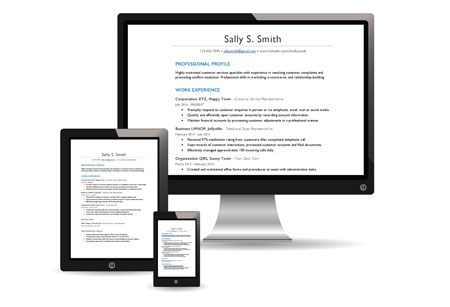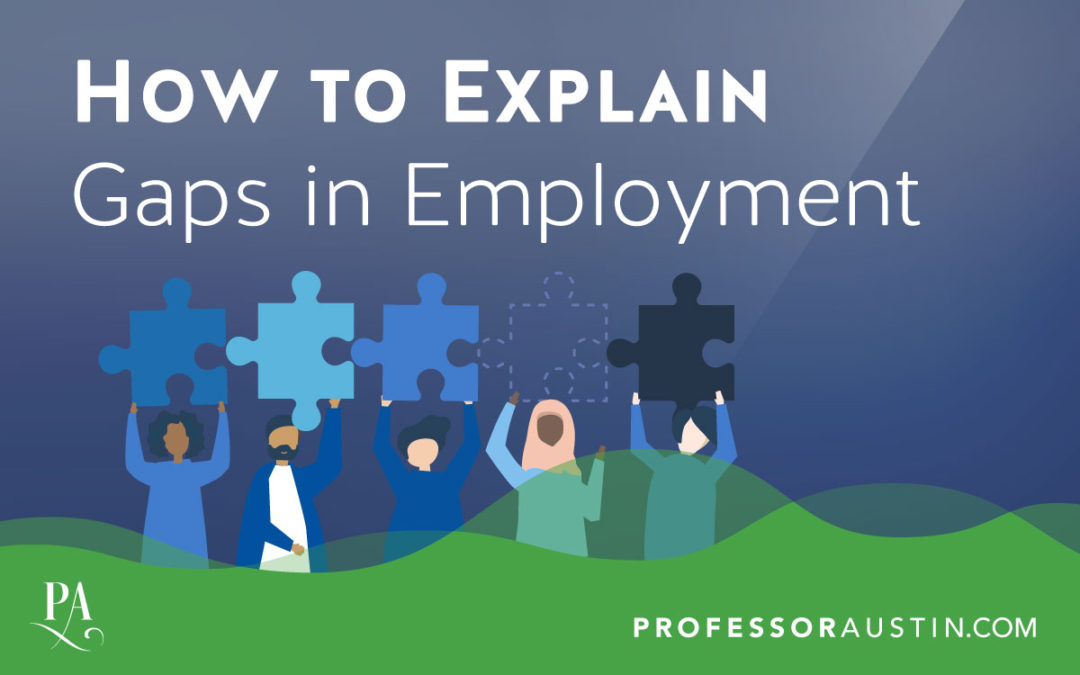Do you have gaps in your work history that you need to address on your resume? Maybe you’ve taken time off because of family obligations, or maybe you were let go, and it’s taken you longer than planned to find a new job.
If this sounds like you, stick around, because today, you’ll learn how to address those gaps of unemployment on your resume.
The 6-Second Resume

Employment gaps on a resume normally don’t become a huge concern to an employer unless they are longer than 6 months. But here’s the thing: gaps in employment are more common today than they’ve been in the past. So don’t let that hold you back from applying for your ideal job.
Now, when it comes to explaining gaps in your work history, you want to be truthful and not misleading. Most employers will do some type of background check before you are hired. Let’s jump into it!
Tip #1 – Format Your Resume Strategically
Rather than a reverse chronological resume (which is the most common resume format and displays your work history in chronological order), consider using a functional resume format or even a hybrid resume format. This will help you bring focus to your accomplishments and abilities rather than your dates of employment.
This will allow you to group more than one position under the same heading. For example, instead of a general work experience section, you may have a section titled “Sales and Marketing Experience,” or “Customer Service Experience,” or even “Database Administration Experience.”
The section title you choose should directly relate to the position you are applying for. For more information about how to format your resume, read or watch about it here.
Tip #2 – Use a Professional Profile to Emphasize Your Strengths
A professional profile is a short paragraph that displays at the top of your resume, right after your name and contact information. Use this section to emphasize your strengths and explain what you can do for a company.
This is the perfect place to sell yourself to the employer. You want to show them how great you are so that when they notice a gap in your work history, it’s not a huge concern to them.
Mention what your greatest accomplishments have been in the industry and how you can help the company solve some of their largest problems.
Tip #3 – List Dates in Years Rather than Months and Years
To draw attention away from the fact that you were unemployed for some time, list only the years you were employed in a specific role, rather than the month and year.
For example, let’s say you were in a position from January of 2014 to March of 2016, and you didn’t start your next role until months later in December of 2016. You could list 2016 – present on your most recent position and 2014 – 2016 on the previous position, as shown below.
{Company Name, Position Title} – 2016 – Present {Company Name, Position Title} – 2014 – 2016
Tip #4 – Include Other Types of Experience You’ve Gained While Unemployed
This includes volunteer work, freelance work, part-time work, and contract work. So, I’ve shared this before and I’m going share it again: 41% of employers value volunteer work as much as they do paid work, so don’t overlook unpaid work you’ve done.
Including other types of experience you gained while unemployed demonstrates that you’re willing to take initiative. Think of special projects you’ve done, any type of community involvement you’ve had or continuing education endeavors you’ve pursued.
Tip #5 – Use Your Cover Letter to Explain Your Gap in More Detail
Your cover letter is the perfect platform to explain the reasoning for your gap in employment. Give a brief explanation of why the gap occurred, and then provide some details about what skills and experiences you gained during the gap.
This reiterates to the employer that you are upfront and honest and that you are not trying hide anything. This also gives you extra practice for when the employer asks about the gap during the interview.
Want help writing a cover letter? I can help you with that, too! Click to read or watch more about it. Here’s an example of how this can be done:
“I had a brief break from the workforce to {list the reason here}. During that time, I kept current with the latest trends and technologies by {list something you did that kept you up-to-date in your field}. I also volunteered at {list the place}, where I {list what you did as a volunteer}.”
Be honest and brief about your reason for your employment gap. For example, you might say, “I had a brief break from the workforce to care for my 2 children who are now in school full-time and because of a reduction in force in my previous place of employment.” One thing you might do to stay up-to-date with trends and technologies is to take professional development courses.
The 6-Second Resume

The 6 Second Resume
Enter your name and email address to gain instant access to your free resume template. Your next job is on its way!
